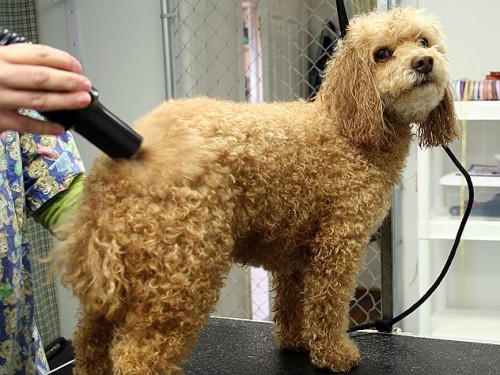The Effect of Salt on a Dog’s Health
Sodium
Many people think of salt and automatically think of sodium, although the two are not exactly one and the same. Sodium is just one part of salt, as it also includes chloride. The bulk of commercial canine foods available on the market contain some salt. Talk to your veterinarian to get suggestions on dog foods that have appropriate levels of sodium. At suitable levels, sodium actually is helpful in dogs’ physiology, assisting in equilibrium of fluids.
Say No to Dogs and Salty Food
Too much salty food and dogs are not a good combination, however. If your dog enviously stares at you as you eat a salty French fry, don’t give in to the urge to feed him a bunch of them — or even one of them. If your dog takes in a lot of salt, it could trigger numerous not-so-pleasant health consequences, including immoderate urination, seizures, heightened thirst, uncontrollable quivering, depression, throwing up, runny stools and raised body temperature. Sodium ion toxicity in dogs can sometimes even be life-threatening, so take the possibility extremely seriously. Urgent veterinary assistance is crucial in these situations.
Dogs With Kidney or Heart Issues
The effects of salt might be even more harmful to specific types of dogs. If your pet has any medical ailments that involve the kidneys or the heart, then a veterinarian might recommend for him a diet that is limited in salt content. This also applies to canines with hypertension. Be extremely cautious about leaving salty food out around your dog, whether he has these health issues or not.
Inadequate Sodium
Just as too much sodium can be detrimental to a dog’s health, so can too little of it. If your pooch isn’t getting adequate amounts of sodium in his canine food, you might notice key symptoms such as lethargy, overly dry skin, growth problems, balance issues, fur loss, reduced H20 consumption and low energy. If you spot any of those clues in your doggie, talk to your veterinarian about planning for a nutritious diet that offers the amounts of sodium that his body needs for optimal health.
How to Find A Good Groomer
Grooming is an essential part of our pets’ health and hygiene. Pets with healthy, clean coats are happier animals! While some dogs and cats are easy to bathe and brush at home, others need regular trips to the groomer.
Here are some tips for finding the best groomer for you:
Ask for referrals

The Internet is also a great tool to do research. Many sites, such as Petfinder’s Local Service and Supplies listings, allow users to leave reviews — a great tool for research.
Your veterinarian may also be a great resource for finding a groomer. Using a groomer that both you and your veterinarian trust is ideal.
A good grooming facility will require vaccination papers from your vet. This helps to ensure that your pet will not contract any disease or infections from other animals at the facility. Regardless of a vet-recommended groomer, you should always leave the contact number of your vet in case of an emergency.
Questions to ask
Everyone wants to know that the groomer has your pets’ safety in mind. Find out if your town requires groomers to be licensed. This ensures that a groomer adheres to certain guidelines. When doing your research, don’t forget to ask the groomer if she is licensed.
Ask your groomer what her policy is if an accident occurs. It is crucial that your groomer be honest and let you know if anything occurs while you left your pet in her hands.
While accidents, such as cuts, scrapes and burns, can happen anywhere, it is important to check your groomer’s credentials first. Look into past accident reports or client complaints whenever possible.
What to look for at the grooming facility
Take your pet with you for a tour of the facilities before your pet’s first grooming appointment. This will give you an opportunity to see how the groomer interacts with other pets and you can ask other pet owners about their experiences with the groomer.
Your pet should become somewhat familiar with the place, and you should feel comfortable leaving your pet there. Be sure that pets are never left unattended while on the grooming table or in the tub.
While visiting, introduce yourself and your pet to the groomer and staff. This will help to make the next visit easier on your pet. Be sure to check that the facility is clean and equipment is sanitary.
What to tell your groomer
You need to discuss any health issues that your pet may have with your groomer. If your pet has specific skin problems, your veterinarian may want your groomer to use a certain shampoo on your pet.
Typically, veterinarians will not want a pet to visit the groomer if they have just undergone a surgical procedure — especially if they have stitches. Be sure to ask your vet about grooming restrictions after any veterinary procedure.
Your groomer is there to help keep your pets’ skin, ears and nails healthy and in good condition. They can be a great resource for noticing ear infections and other skin related issues, which you can then discuss with your veterinarian.





